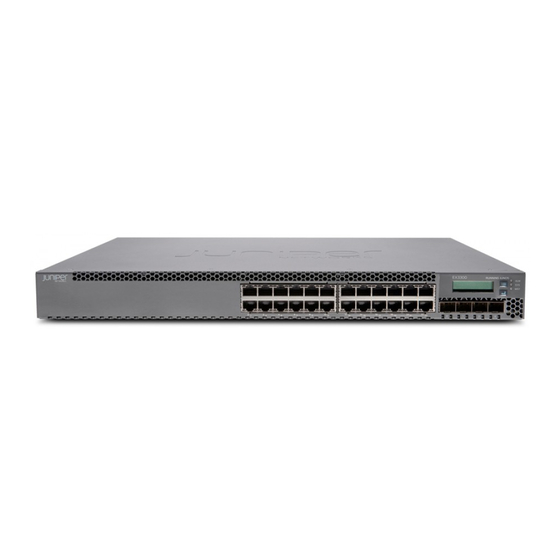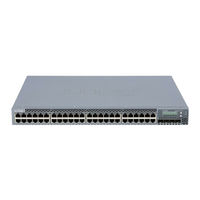
User Manuals: Juniper EX3300 Ethernet Switch
Manuals and User Guides for Juniper EX3300 Ethernet Switch. We have 6 Juniper EX3300 Ethernet Switch manuals available for free PDF download: Hardware Manual, Complete Hardware Manual, Quick Start Manual
Juniper EX3300 Hardware Manual (354 pages)
Junos OSfor EXSeries EthernetSwitches
Table of Contents
-
-
Overview21
-
-
-
ECMP Traffic31
-
Mpls34
-
-
Interfaces36
-
-
-
Advertisement
Juniper EX3300 Hardware Manual (272 pages)
Table of Contents
-
-
-
Overview23
-
-
Uplink Ports26
-
-
-
-
-
Alarms Panel57
-
-
-
-
-
-
-
-
-
-
-
Connector166
-
-
-
Components197
-
Troubleshooting203
-
-
-
-
TN Power Warning264
-
-
-
Canada268
-
Israel269
-
Japan269
-
Korea270
-
United States270
-
-
Advertisement
Juniper EX3300 Complete Hardware Manual (202 pages)
Table of Contents
-
Uplink Ports26
-
Uplink Ports38
-
Switches72
Advertisement





